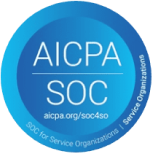QR Code Generator: Create Custom & Trackable QR Codes
Go beyond the limits of a free QR Code. Connect audiences offline to online with Uniqode's paid QR Code solution.

Try Uniqode's premium features for free
Experience how a QR Code solution can power your business.
Start 14-DAY Free TrialBuilt in New York
On-Alert Customer Support
The Only Enterprise-Ready QR Solution
Discover the benefits of a dynamic QR Code with Uniqode’s QR Code maker
Static QR Codes
Trusted by businesses you



How to make a QR Code

Step 1. Create
Create a free QR Code on our QR Code generator by entering the URL or link of the content of your choice. To generate a dynamic QR Code, log in to our QR Code maker, select QR Code type and enter the URL.

Step 2. Customize
Design the QR Code color, shape, and background. Create a branded QR Code by adding a logo, and add a QR Code frame and CTA. Your custom QR Code is ready to download.
Step 3. Download
Test your QR Code before deploying and download it in the required format. For resizing, we recommend using high-resolution QR Code formats (.svg, .eps.). Download and get started with your QR Code campaign.
Shape your brand identity with a custom QR Code maker

Create a branded QR Code by adding a logo to the center of your QR Code. This helps your audience easily recognize and scan the QR Code.

Customize the QR Code colors to align with your brand. You can also change the color of individual elements such as eyeball, the data pattern or dots, eye frame, or shape of the QR Code itself.

Generate a QR Code with a transparent or white background. You can also add a solid color to the QR Code or even an image in the background.

Get ahead and download your QR Codes in suitable formats. You can choose vector QR Code formats like SVG or EPS for offline campaigns. Go with a PNG QR Code or JPG for online campaigns.

Go beyond free QR Codes: Do more with Uniqode’s QR Code maker
We know what it takes to run a successful QR Code campaign - so our team built Uniqode accordingly to equip you with all the features you need.

Smart QR Codes
Dynamic QR Codes, but better. With smart rules, you can edit, track, and redirect your audience to personalized content based on time, day, location, or the rule of your choice.

QR Code tracking
Get insights on all your QR Code campaigns with metrics such as the number of scans, location, time, and a bonus level of accuracy with GPS location.

Generate bulk QR Codes
Scale up your campaigns with bulk QR Code– create up to 2,000 QR Codes at once. Instantly download multiple QR Codes with ease.

Organization
Too many QR Codes on the dashboard? Easily sort them with labels, or use advanced filters to locate QR Codes based on metrics such as number of scans, date created, performance, etc.

QR Code API
Automate QR Code operations, at scale. Connect it to apps, landing pages, forms, get notified of QR Code actions, and track campaigns.

Error correction
Built-in error correction, to ensure scannability at all times with Uniqode’s QR Code generator. Download high-resolution formats and adjust error correction levels.
Additional features for enterprise teams to succeed at scale

Centralized admin management
Organize your QR Codes on the basis of teams, campaigns, and size. Our centralized admin management lets you add users and collaborate with multiple team members or different teams from a single account.

Advanced retargeting
Improve purchase rate and conversions by reaching users who scanned your QR Codes - on YouTube, Facebook, and Google.

Custom Domain
Help users identify your campaign with a custom domain. Say, you have a business named McMickey. Your campaigns can have the domain qr.mcmickey.com.
The QR Code maker for every use case

Collect responses easily and generate potential leads with QR Code forms. They are easy to manage, 100% contactless, and cost-effective. Let users scan and access online forms effortlessly.

Create mobile-friendly landing pages that redirect to multiple destinations. Avoid the hassle of generating QR Codes for each URL. Leverage Uniqode’s custom landing page builder for higher conversion rates and ROI.

Upgrade your restaurant’s ordering system with our reliable and convenient contactless menus. Digitize your PDF menus in a flash, provide an engaging dining experience, and save up on printing costs.

Bolster your networking efforts with our best-in-class digital business card. You can also reuse its design as a template for quick & easy generation of future business cards. Engage clients while on the go and let them save your contact details with a few clicks.

Integrations for every use case with our QR Code generator

Connect Uniqode with the following software and thousands more using our integrations with Zapier, Make (formerly Integromat), and Workato.

Receive more in-depth insights on your QR Code campaigns, such as user behavior, engagement, and demographics.

Simplify team communication, unify data collection, and keep your team in the loop on the latest QR Code insights in real-time.

Use Uniqode’s add-on in your spreadsheets to seamlessly create QR Codes in bulk and effectively manage your QR Code campaigns.

Sync all your QR Codes to your Canva account with a few clicks. Avoid manual uploads and edit your designs with ease.

Popular QR Code types that you can create online

QR Codes to access website
Convert your website URL into a QR Code. Generate custom website QR Codes that lead to relevant web pages.

Navigate to a location with QR Codes
Use QR Codes to share location details with your audience. Link your QR Code to Google Maps, Apple Maps, or Waze.

QR Codes to open a PDF
Use PDF QR Codes to deliver tutorials, manuals, comparison sheets, company documentation, and product brochures right away.
QR Codes to collect Google Reviews
Gather feedback, improve customer experience, and generate revenue with a QR Code for Google Reviews.

QR Codes to download an app
Encourage users to download an app with a QR Code that redirects them to Google Play, App Store, or Windows App Store, based on the device.
Link QR Code to a Google Form
Convert your Google Form into a QR Code. Use it for tracking attendance, conducting surveys, event registration, and much more.
Get started with Uniqode's
QR Code maker for FREE

Ready to create a QR Code? Here are a few basics to get started
A QR Code is a 2D barcode first invented by the Japanese company Denso Wave in 1994. Almost three decades later, a QR Code has now become commonplace in almost every business. From product packaging, to billboards- QR Codes are being deployed everywhere to share information, track inventory, conduct surveys, and do much more.
You can go ahead and create a QR Code with Uniqode’s (formerly Beaconstac) free QR Code generator.
You can easily scan a QR Code using your mobile device. Just open the camera app or a QR Code scanner, and aim it towards the QR Code.
For excellent scannability, we recommend printing good quality, high resolution QR Codes. In case you plan to deploy the QR Codes in coarse environments like a construction site, we recomment creating durable QR Codes with high error correction levels.
Static QR Codes are best for one-time use cases. They can be used to direct users to a fixed destination. This means one cannot change the destination URL once printed and distributed.
On the other hand, dynamic QR Codes are flexible in nature. They work best for long term use cases. One can modify or switch URLs linked to it, even after printing and distributing. Check out our complete guide on static vs dynamic QR Codes.
Online QR Code Generator - FAQs
You can create a QR Code in four easy steps with Uniqode (formerly Beaconstac):
- Go to Uniqode’s QR Code generator
- Select the type of QR Code and input the required details
- Customize the QR Code with logo, frame, CTA, etc
- Download the QR Code in your preferred format
You can generate a QR Code with logo in four easy steps:
- Log in to Uniqode’s dashboard or sign up for a free trial
- Select QR Code type and add the required details
- Customize the QR Code by adding your logo
- Download the QR Code in any high resolution format.
You can track QR Code scans with Uniqode’s (formerly Beaconstac) dynamic QR Code generator.
- Login to Uniqode’s dashboard or sign up for a free trial to get access.
- Go to Uniqode’s dashboard and select ‘QR codes’ on the left-side panel.
- You will able to view the number of scans against all the QR Codes generated.
- Select ‘Analytics’ for an in-depth data on your QR Code performance
Below mentioned are some of the best QR Code generators according to our analysis:
- Uniqode
- The QR Code generator
- QR Code Monkey
- Flowcode
- QR Code generator Pro
You can generate a QR Code for free in four simple steps:
- Go to Uniqode’s QR Code maker
- Select the QR Code type and add the required details
- Customize the QR Code as per your brand aesthetics
- Download your free QR Code and use it.
Yes, you can make a QR Code a link in four quick steps:
- Go to Uniqode’s QR Code generator and click ‘URL’
- Paste the link in the space provided
- Customize your QR Code for link
- Download the QR Code in preferred format
If you generate a free, static QR Code- they are permanent and do not expire. However, this also means you can never edit or change them if required. Dynamic QR Codes on the other hand are editable, permanent and do not expire as long as your paid subscription lasts.
Yes, QR Code generators like Uniqode are safe. Our QR Code solution offers security features such as custom domain, SSL, and URL. We are also GDPR and SOC 2 complaint. You can create branded QR Codes that your customer base can identify and trust to scan.
Canva QR Codes do not expire as they are static in nature. Once created, you cannot make any changes to a Canva QR Code such as edit QR Code destination, change the design, or track QR Code performance.
Adobe Express QR Codes are not trackable. Adobe lets you create static QR Codes which cannot be tracked or edited once generated.
Yes, Uniqode’s QR Code generator offers unlimited scans on free, static QR Codes. If you want to edit, track, and extensively customize a QR Code, upgrade to dynamic QR Codes and get up to 2,000,000 scans.
Reviews
★★★★★4.8 / 5(of 758 reviews)Free qr code generator
good & effective application. very easy to use. easy to Download.

Shamala
Oct 14, 2022
India
Creating qr codes is easy
Love the ease of use and the options for shapes and colours!

Sharon Savage
Oct 13, 2022
United States
Creating qr codes is easy
Super easy, works great . Definitely recommended for anyone to use

Karel Beck
Oct 10, 2022
United States
Creating qr codes is easy
Amazing service quick and easy exactly what I was after.

Kylie
Sep 30, 2022
Australia
Make qr codes fast and easy
Really appreciate this website for the ease and usability, especially for me.

Angelica
Sep 15, 2022
United States
Free qr code generator
I love it! Easy to use once you figure it out. Does exactly what I need.

Travis Almany
Aug 28, 2022
United States
See how Uniqode works
SCHEDULE LIVE DEMO
Grow your business with QR Codes
BUY QR CODE SOLUTION






